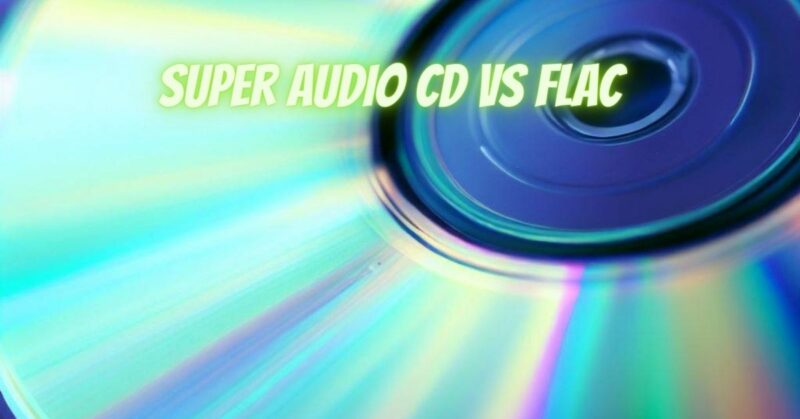When it comes to high-quality audio playback, there are various formats available, each with its own strengths and characteristics. Super Audio CD (SACD) and FLAC (Free Lossless Audio Codec) are two popular formats known for their ability to deliver excellent audio fidelity. In this article, we will compare SACD and FLAC to help you understand their differences and make an informed choice when it comes to enjoying high-quality audio.
- Audio Quality: Both SACD and FLAC are capable of delivering high-quality audio, but they use different approaches. SACD employs a process called Direct Stream Digital (DSD) encoding, which samples the audio at an extremely high rate of 2.8224 MHz. This results in a more accurate representation of the original analog sound wave. On the other hand, FLAC is a lossless compression format that retains all the audio data without any loss in quality. It offers CD-quality audio (16-bit/44.1 kHz) or even higher resolutions depending on the source material.
- Resolution and Sampling Rates: SACD is known for its high-resolution audio capabilities. It can support stereo and multi-channel audio with sampling rates of up to 5.6 MHz (DSD64) or even 11.2 MHz (DSD128) for some releases. This allows for greater detail and a more natural sound reproduction. FLAC, on the other hand, can support various resolutions, including CD-quality (16-bit/44.1 kHz), high-resolution (24-bit/96 kHz or 24-bit/192 kHz), and even higher resolutions if available. The flexibility of FLAC makes it suitable for a wide range of audio playback needs.
- Compression: SACD and FLAC use different approaches to compression. SACD uses a lossless compression method called Direct Stream Transfer (DST), which reduces the size of the audio data without compromising quality. FLAC, as a lossless codec, also compresses audio data without any loss in quality. The compression ratio achieved by FLAC varies depending on the complexity of the audio content, but it typically achieves a compression ratio of around 50-60%. This makes FLAC more space-efficient compared to SACD, which requires larger storage capacities due to the uncompressed nature of DSD audio.
- Compatibility and Accessibility: SACDs require specific hardware or players that support the format to play the discs. Not all standard CD players or computer drives are capable of playing SACDs. In contrast, FLAC is a widely supported format that can be played on a variety of devices, including computers, smartphones, portable media players, and network streaming devices. FLAC files can also be easily transferred and streamed over networks or stored on different types of media, making them more accessible and versatile.
- Availability and Catalog: The availability of SACD titles may vary depending on the region and specific music labels. While SACDs offer a growing catalog of high-quality releases, they may not have as extensive a selection as standard CDs or digital formats. On the other hand, FLAC has a vast library of available content, with many online music stores and streaming platforms offering high-resolution FLAC files, including studio-quality recordings and remastered classics.
| Feature | Super Audio CD | FLAC |
|---|---|---|
| Audio format | DSD | FLAC |
| Sampling rate | 2.8224 MHz | Up to 192 kHz |
| Bit depth | 1 bit | Up to 24 bits |
| File size | Larger | Smaller |
| Compatibility | SACD players | Computers, media players, smartphones |
| Availability | Less common | More common |
| Price | More expensive | Less expensive |
Conclusion:
Both Super Audio CD (SACD) and FLAC offer high-quality audio playback with their unique features and strengths. SACD excels in delivering ultra-high-resolution audio using the DSD encoding process, while FLAC provides a versatile and widely compatible lossless compression format with various resolution options. When deciding between the two, consider your playback devices, accessibility, and the availability of content in each format. Ultimately, choose the format that suits your preferences and ensures an enjoyable listening experience with the highest audio fidelity possible.

